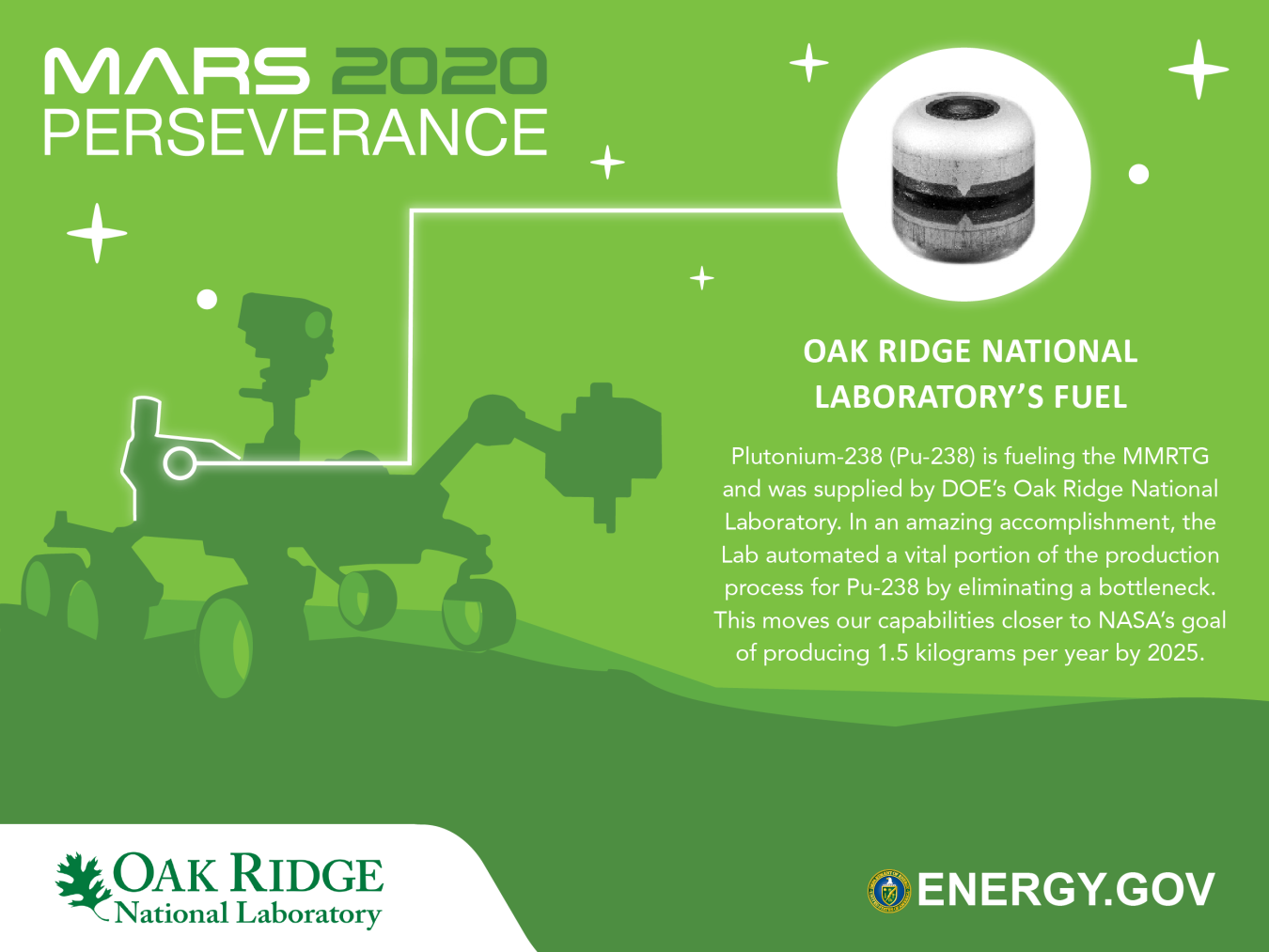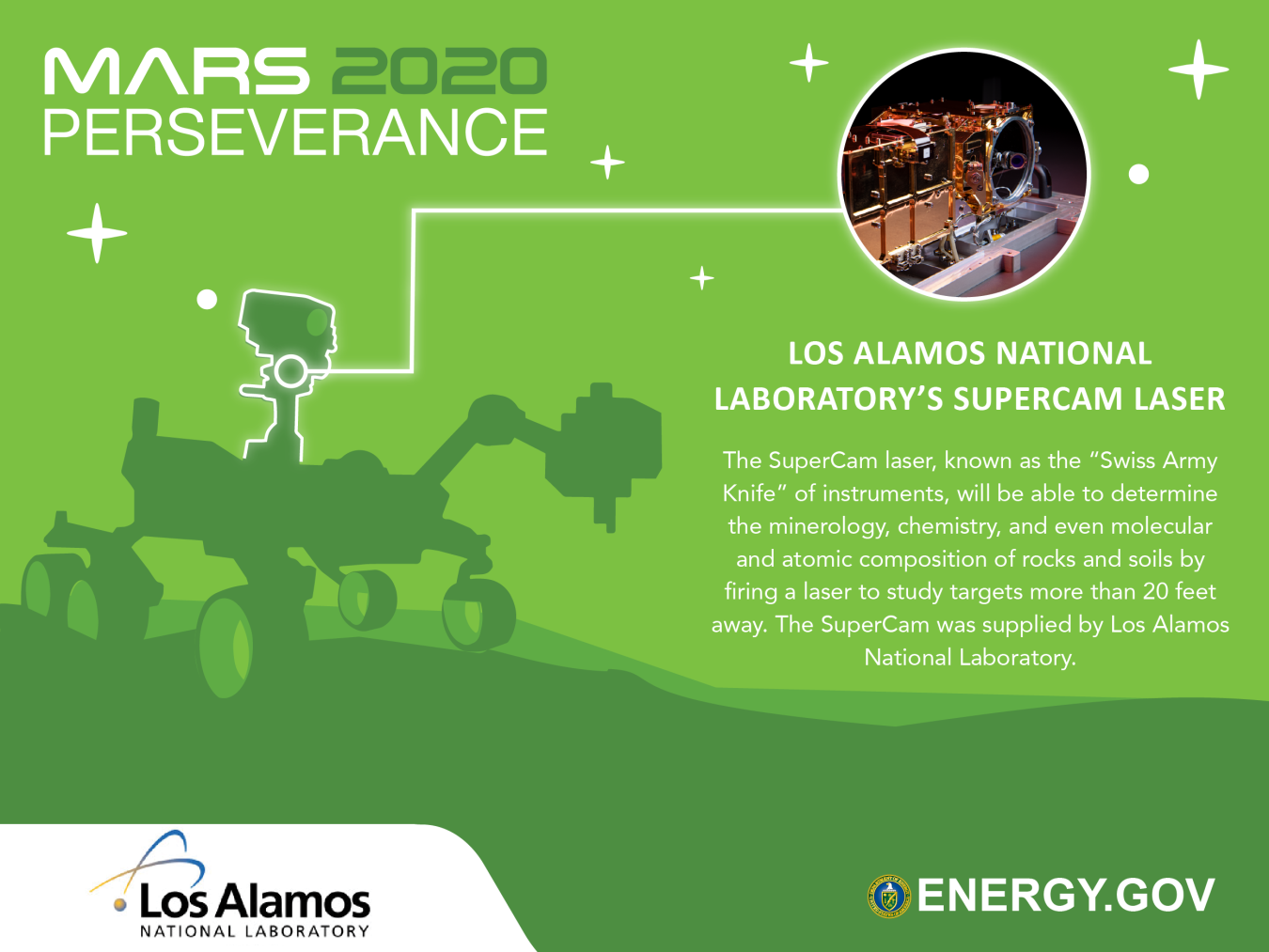America’s pioneering spirit will propel us to new heights of Mars and beyond and DOE's national labs will continue to play a crucial part!
July 30, 2020
In what can only be described as an awesome achievement for the United States of America, NASA’s Perseverance Mars rover successfully launched on July 30 from Cape Canaveral. The rover will land on Mars to begin exploration some time in February 2021. The Department of Energy’s (DOE) National Laboratories are critical to the success of the Mars exploration mission. I was honored to see the launch in person and witness first-hand how DOE partnered with NASA to push the boundaries of space exploration.
Idaho, Los Alamos, and Oak Ridge National Laboratories supplied specific parts to the Perseverance, which will allow the spacecraft to carry out NASA’s goal of “not only seeking signs of habitable conditions on Mars in the ancient past, but also searching for signs of past microbial life itself.” The mission will also test technologies that further open the way for future human missions to the Moon and Mars.

The “Department of Exploration,” as some have nicknamed DOE, is proud to play an integral part in these efforts. So, how exactly did DOE contribute to this journey?
Let’s start by dissecting the Multi-Mission Radioisotope Thermoelectric Generator (MMRTG), crafted by the experts at Idaho National Lab.
The MMRTG will provide heat and power to Perseverance as it spends at least one Mars year (687 Earth days) searching for signs of past microbial life, collecting rock and soil samples for a possible return to Earth, and clearing the way for potential future human missions to the Moon and Mars.
But what’s fueling the MMRTG? Plutonium-238 (Pu-238).

This fuel was supplied by DOE’s Oak Ridge National Laboratory. In an amazing accomplishment, the Lab automated a vital portion of the production process for Pu-238 by eliminating a bottleneck. This moves our capabilities closer to NASA’s goal of producing 1.5 kilograms per year by 2025.
Lastly, let’s talk about lasers. Who doesn’t like hearing about giant lasers? They’re cool, they’re powerful, and they’re the stuff of every great science fiction movie. They’re also vitally important to NASA’s Perseverance mission.
The SuperCam laser, known as the “Swiss Army Knife” of instruments, will be able to determine the minerology, chemistry, and even molecular and atomic composition of rocks and soils by firing a laser to study targets more than 20 feet away. The SuperCam was supplied by Los Alamos National Laboratory.

As shown in the graphic, the SuperCam is mounted atop the rover’s mast and will search for signs of ancient microbial life, as well as identify elements in the Martian dust that may be harmful to future human explorers.
It will also act as a cleaning tool for the rover. It has the ability to dust rock targets by wiping away dirt and sand, allowing the rover’s instruments to have a clearer view from a distance. The SuperCam isn’t actually “giant,” but it does have awesome power.
Now, this isn’t DOE’s first effort in space exploration. DOE has enabled space exploration on nearly 30 missions over the past 50 years, including the Curiosity rover currently on Mars.
It also won’t be the last. As space exploration visionaries, NASA and DOE are already planning for our next incredible goal: NASA’s Dragonfly mission to Saturn’s moon, Titan, in 2026. This will also be powered by DOE, thanks again to Idaho National Lab.
America’s pioneering spirit will propel us to new heights of Mars and beyond. DOE’s National Labs will continue to play a crucial part, and we are proud to power NASA’s missions with American energy and ingenuity, preparing the next generations of the space and STEM workforce.
Paul M. Dabbar

The Honorable Paul M. Dabbar served as the Department’s fourth Under Secretary for Science, He served as the Department’s principal advisor on fundamental energy research, energy technologies, and science, driving this mission through programs including nuclear and high energy particle physics, basic energy, advanced computing, fusion, and biological and environmental research, and direct management over a majority of the Department’s national labs and their world-leading user facilities. In addition, Mr. Dabbar managed the environmental and legacy management missions of the Department, addressing the U.S. legacy of nuclear weapons production and government-sponsored nuclear energy research. In addition, Mr. Dabbar is the lead for technology commercialization activities for the Department and its 17 national labs.
During his time in government service, Mr. Dabbar has traveled to both the North and South Poles. He traveled to the North Pole by submarine to conduct environmental research while in the Navy, and to the South Pole in support of high energy physics astronomy missions by the Department at South Pole Station.
Prior to confirmation as Under Secretary for Science, Mr. Dabbar worked in operations, finance, and strategy roles in the energy sector. As a Managing Director at J.P. Morgan, leading various energy business areas, he has over $400 billion in investment experience across all energy sectors including solar, wind, geothermal, distributed-generation, utility, LNG, pipeline, oil & gas, trading, and energy technologies, and has also led the majority of all nuclear transactions. In addition, he had a senior leadership role for the company’s commodity trading business, including power, oil and gas.
Before joining J.P. Morgan, Mr. Dabbar served as a nuclear submarine officer in Mare Island, California, and Pearl Harbor, Hawaii. He also served on the Department of Energy Environmental Management Advisory Board. He has been a lecturer at the U.S. Naval Academy, and conducted research at the Johns Hopkins University Applied Physics Laboratory. He is also a member of the Council on Foreign Relations.
Mr. Dabbar received a B.S. degree from the U.S. Naval Academy, and a masters degree from Columbia University. Mr. Dabbar and his wife, Andrea, are the parents of two children.

